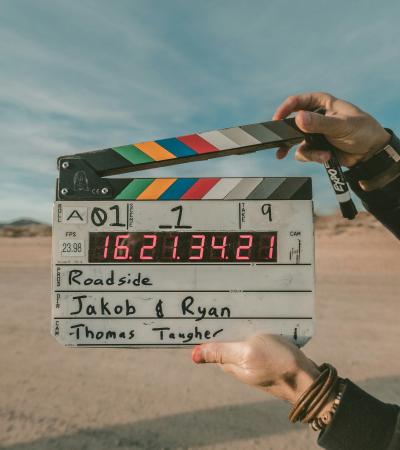Author's note: This is another installment of "Rural Roots," a blog about rural librarianship and its challenges. In this and upcoming articles I’ll be sharing ways in which many of these challenges were met and overcome in a small library in Colorado.

For more than 10 years now, the Gilpin County Public Library has been offering several five-part film series a year, each with a distinct theme, to its community of library users. From the very beginning the Friends of the Library have been involved. In 2003 the library received a “Research Revolution” video viewing and discussion grant from National Video Resources, the National Science Foundation and the American Library Association. (We were one of only 50 libraries in America to be selected as a pilot site for this series.) The Friends were so proud that they financed the purchase of a new television with built-in VHS and DVD players. And it was the Friends who constituted the core group of participants in the program.
When that series came to an end, it left the audience wanting more, so we contacted a professor from the University of Colorado who happened to be teaching film history at the time. He recommended Walter Chaw, a Denver-area film critic, to be our discussion leader. Walter and I devised a five-part series on film noir that included such films as “Out of the Past” and “Chinatown.” The community of attendees formed an instant bond with Walter, as it was evident he was offering much more food for thought than just a summary of any particular film — he was enriching the conversation with information about the history and development of film as well.
The Friends fell into a pattern of financing each series — purchasing each film, paying Walter an honorarium and providing refreshments as well. We continued with the next series, an “Alfred Hitchcock Festival,” including “Shadow of a Doubt,” “Notorious,” “Strangers on a Train,” “I Confess” and “North by Northwest.” This was again well-attended, and in fact took place at the same time as a film class from the Gilpin High School, so we were able to get a number of teens to participate in the viewing and discussion of each film in the library. We went on to present “Classics of Film Comedy,” “Classic Westerns,” “Science Fiction,” “Ghost Stories” and many more. We’ve even had a series of foreign films, with subtitles, that attracted a whole new faction to be part of the audience.
All of the programs have taken place on Saturday afternoons; the Friends provide popcorn, cookies and coffee. The population of Gilpin County is around 5,000 people. The size of a typical audience for any one of the films is about 16 to 22. (We’ve enjoyed 30 on several occasions, and recently hit a record high of 36.)
As a result of these film programs, the community has been given the opportunity to get to know neighbors and share a common experience. Regulars began bringing new people with them, neighbors carpooling with neighbors, and some of the discussions continued elsewhere after a particular film program was “adjourned.” And after the conclusion of each series, there were plenty of recommendations to consider in the planning of the next series theme.
What seems to have happened here is a series of fortuitous events caused the Friends of the Library, the community residents, the library director and staff, a scholar and a film critic to come together to watch and discuss some of the greatest films of the past 50 years or so.
It is possible that we have managed to recapture some childhood memories of going to the movies on Saturday afternoon. The opportunity to immediately talk about the shared experience of viewing a film makes this more compelling than a standard book club experience. And the right facilitator can make all the difference, if he or she is well-versed in film history and even trivia. To know what inspired filmmakers and directors, how the cast may have gotten along through anecdotal comments, and other tantalizing facts about each film are impossible to resist. The unique aspect of all this is finding elements to make a program like this work, and to make them fit together as pieces of a puzzle.
The success here at the Gilpin County Library is evidenced by the fact that we are right now — and always — planning the next series and have ideas floating around for the one after that and the one after that. We have here a film viewing and discussion program that is never-ending and has come to have a life of its own. And that’s pretty rare in public programming.
More on the library creating a lasting legacy in your rural community in the Rural Roots articles to come. Be sure to tune in next month to www.programminglibrarian.org.


